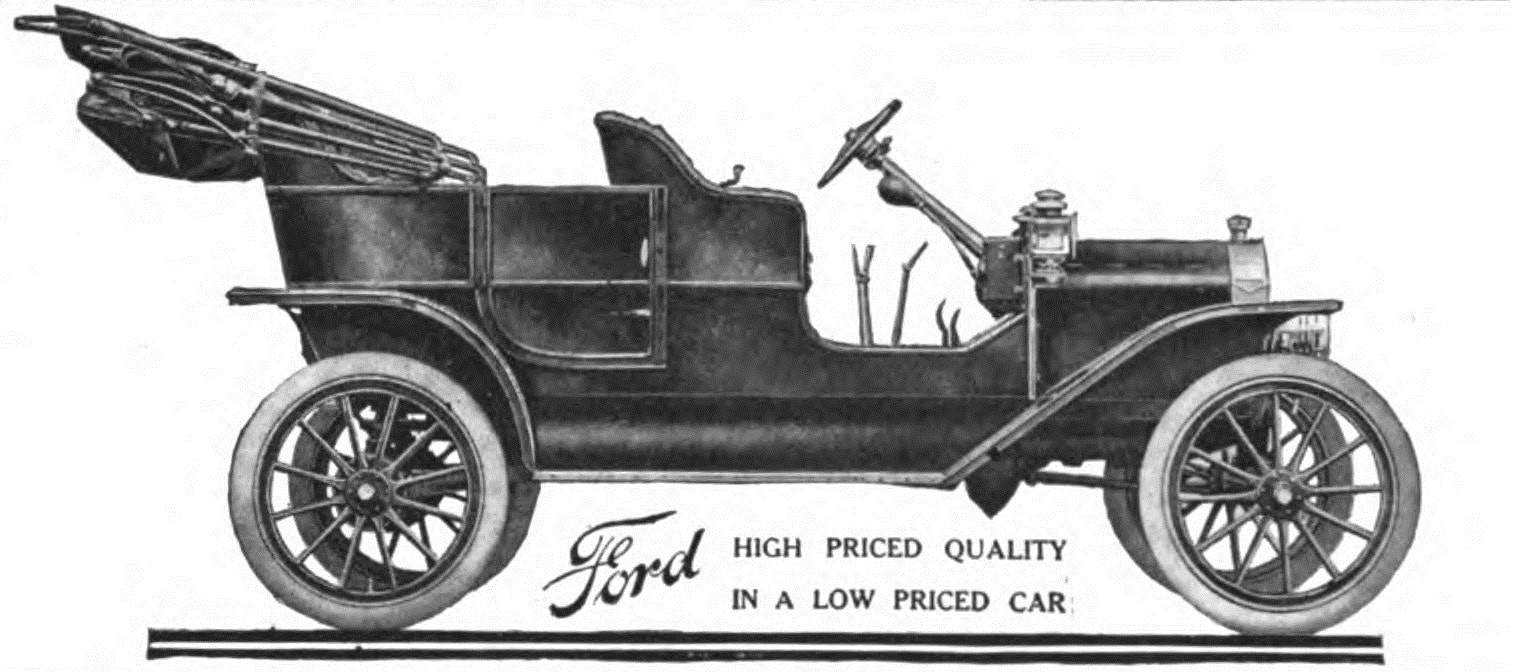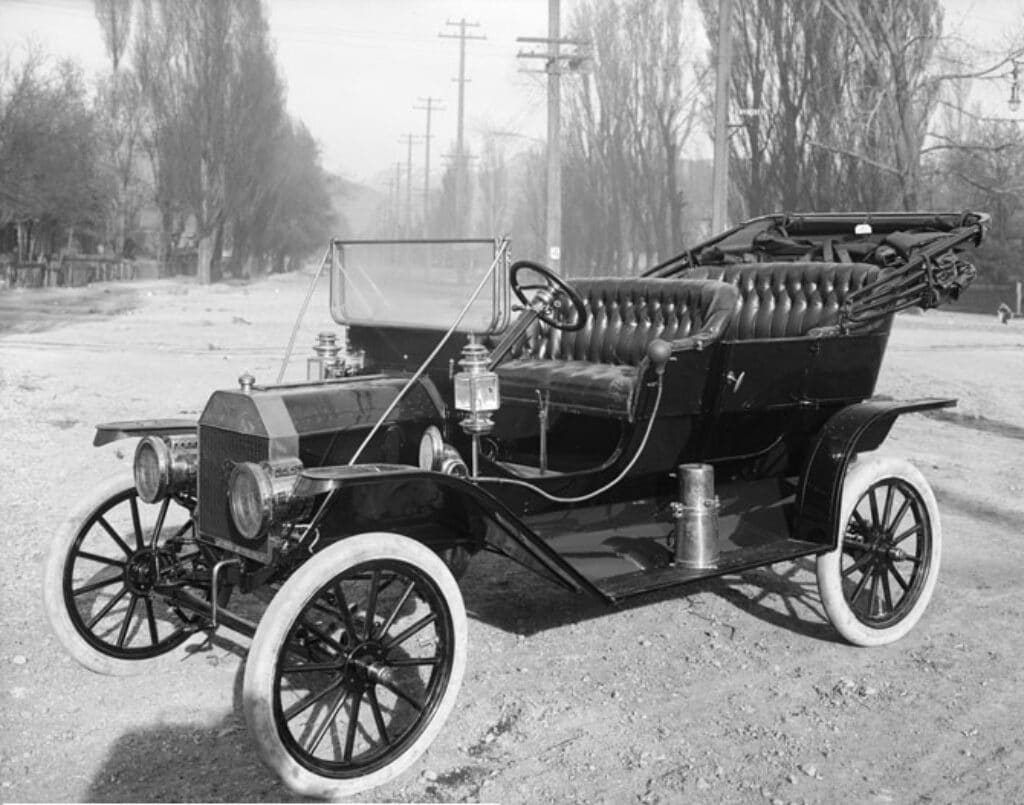
Today, on June 16, 2023, we celebrate the 120-year anniversary of the Ford Motor Company, an institution that has left an indelible mark on the automotive industry and the world as we know it. The man behind this revolutionary venture was none other than Henry Ford, a visionary who transformed the automobile from an invention of unknown utility into an innovation that profoundly shaped the 20th century and continues to affect our lives today.
The Early Life of Henry Ford
Born on July 30, 1863, in what is now Dearborn, Michigan, Henry Ford was the first surviving son of William and Mary Ford, who owned a prosperous farm. From an early age, Ford demonstrated a knack for mechanics, organizing other boys to build rudimentary water wheels and steam engines. He taught himself to fix watches, using them as textbooks to learn the rudiments of machine design. This early fascination with machines would set the stage for his future endeavours.
At the age of 16, Ford left home for Detroit, where he found apprentice work as a machinist. After three years, he returned to Dearborn and worked on the family farm but continued to operate and service steam engines and work occasional stints in Detroit factories. In 1888, he married Clara Bryant, and in 1891, they moved to Detroit, where Ford was hired as an engineer for the Edison Illuminating Company. Rising quickly through the ranks, he was promoted to chief engineer two years later.
The Birth of Ford Motor Company and the Model T
Ford’s early experiments culminated in 1896 with the completion of his first self-propelled vehicle, the Quadricycle. However, it was not until 1903 that he established the Ford Motor Company. A month after the company was established, the first Ford car—the two-cylinder, eight-horsepower Model A—was assembled at a plant on Mack Avenue in Detroit.
However, the real breakthrough came five years later with the introduction of the Model T in October 1908. The Model T was easy to operate, maintain, and handle on rough roads. It was an immediate success, and Ford soon had more orders than the company could satisfy. To meet the overwhelming demand for this revolutionary vehicle, Ford introduced new mass-production methods, including large production plants, the use of standardized, interchangeable parts, and, in 1913, the world’s first moving assembly line for cars.
Henry Ford’s unwavering commitment to the Model T, despite the changing landscape of the automotive industry, is a testament to his stubbornness and belief in his creation. The Model T, introduced in 1908, was a revolutionary vehicle that was affordable, reliable, and easy to operate and maintain. It was an immediate success, and Ford was soon inundated with orders. To meet this demand, Ford implemented innovative mass-production methods, including the world’s first moving assembly line for automobiles. This allowed him to produce the Model T on a scale and at a price point that was unprecedented.
However, as the years passed, the automotive industry began to evolve. Other manufacturers started producing more modern, stylish, and comfortable vehicles. These new models offered features and conveniences that the Model T lacked, such as electric starters, more comfortable interiors, and more stylish designs. The Chevrolet, for instance, was gaining popularity with its more modern design and features.
Despite these market shifts, Ford stubbornly refused to modernize the Model T. He was quoted as saying, “Any customer can have a car painted any color that he wants so long as it is black.” This was because black paint was cheaper and dried faster than other colors, which suited the rapid production of the Model T. Ford’s stubborn adherence to the Model T and his resistance to change were rooted in his belief that the Model T was the perfect car for the average American. He saw no need for unnecessary features or changes, and he believed that his customers shared this view.
However, this stubbornness eventually proved to be a misstep. As the 1920s progressed, sales of the Model T began to decline sharply. Consumers were increasingly drawn to the more modern vehicles offered by Ford’s competitors. Despite the clear signs that the market was changing, Ford remained resolute in his commitment to the Model T. It wasn’t until 1927 when sales had declined so much that he could no longer ignore the reality of the situation, that he finally made the decision to discontinue the Model T.
This period marked a significant turning point for Ford. His refusal to adapt to the changing market and his unwavering commitment to the Model T had cost him his dominance in the automotive industry. By the time he introduced the Model A as a replacement for the Model T, Ford had fallen behind his competitors, such as GM (founded in 1908, the same year the Model T was introduced), offering cars under brands such as Buick, Cadillac or Chevrolet, or Dodge and Studebaker.

Ford’s Impact on the Industry and His Staff
Ford’s innovations significantly cut down on the time required to produce an automobile, which allowed costs to stay low. In 1914, he also increased the daily wage for an eight-hour day for his workers to $5 (up from $2.34 for nine hours), setting a standard for the industry. This move not only stabilized his workforce but also gave workers the ability to buy the very cars they made.
By 1918, half of all cars in America were Model Ts. In 1919, Ford named his son Edsel as president of Ford Motor Company, but he retained full control of the company’s operations. After a court battle with his stockholders, led by brothers Horace and John Dodge, Henry Ford bought out all minority stockholders by 1920.
The Man Behind the Machines
Henry Ford was not just a successful businessman; he was also a man of strong convictions. He was known for his pacifist stance during the early years of World War I and drew controversy for his anti-Semitic views and writings. Despite his progressive policies regarding the minimum wage, Ford waged a long battle against unionization of labor, refusing to come to terms with the United Automobile Workers (UAW) even after his competitors did so. In 1937, Ford security staff clashed with UAW organizers in the so-called “Battle of the Overpass,” at the Rouge plant, after which the National Labor Relations Board ordered Ford to stop interfering with union organization. Ford Motor Company signed its first contract with UAW in 1941, but not before Henry Ford considered shutting down the company to avoid it.
Ford’s political views earned him widespread criticism over the years, beginning with his campaign against U.S. involvement in World War I. He made a failed bid for a U.S. Senate seat in 1918, narrowly losing in a campaign marked by personal attacks from his opponent. In the Dearborn Independent, a local newspaper he bought in 1918, Ford published several anti-Semitic writings that were collected and published as a four-volume set called The International Jew. He later renounced the writings and sold the paper.
The Legacy of Henry Ford
Despite the controversies, Ford’s legacy in the automotive industry is undeniable. His innovative production methods and the introduction of the Model T revolutionized the industry, making cars affordable and accessible to the masses. His decision to increase wages for his workers set a new standard in the industry and helped to stabilize his workforce.
Ford’s influence extended beyond the automotive industry. His assembly line production method was adopted by other industries, transforming manufacturing processes worldwide. His high-wage, low-skilled factory jobs accelerated both immigration from overseas and the movement of Americans from the farms to the cities. The same jobs also accelerated the movement of the same people into an ever-expanding middle class.
Henry Ford passed away on April 7, 1947, at the age of 83. His innovative spirit and vision continue to inspire and shape the automotive industry.
Less-Known Facts about Ford
- The mass production techniques Henry Ford championed eventually allowed Ford Motor Company to turn out one Model T every 24 seconds.
- Ford’s first car, the Quadricycle, was a light metal frame fitted with four bicycle wheels and powered by a two-cylinder, four-horsepower gasoline engine.
- Ford’s $5 wage for an eight-hour day was more than double the average wage for a nine-hour day at the time.
- Ford was an advocate for “Fordism,” the system of mass production and consumption considered a precursor to modern economic and social systems.
- Despite his success, Ford had a taste for risk-taking. He often took jobs because he didn’t know how to do them, seeing them as opportunities to learn.
- Ford was a lifelong tinkerer. Even as a boy, he was fascinated by how things worked and would often disassemble items just to understand their mechanics.
- Ford’s fascination with machines led him to leave his family’s farm at 16 to become an apprentice at a railroad car manufacturer.
- Ford’s Model T was so successful that by 1922, half of all cars in America were Model Ts.
- Despite his success, Ford was not without failures. His first two automotive companies failed, but he persevered and eventually founded the successful Ford Motor Company.



